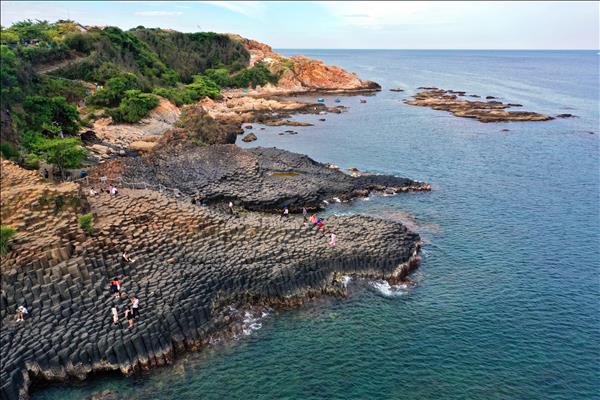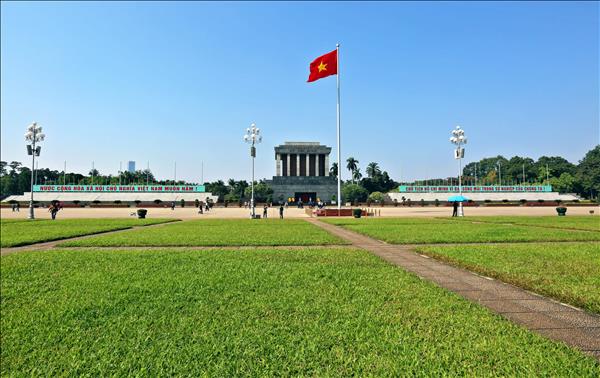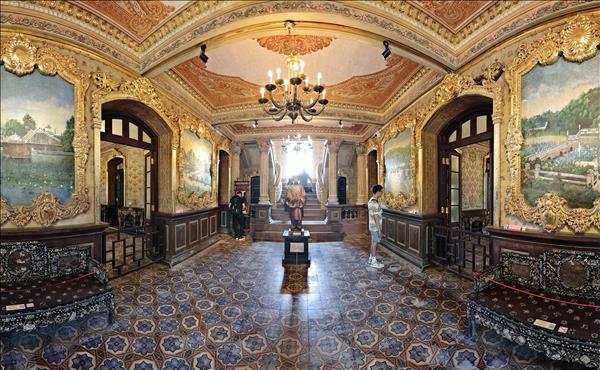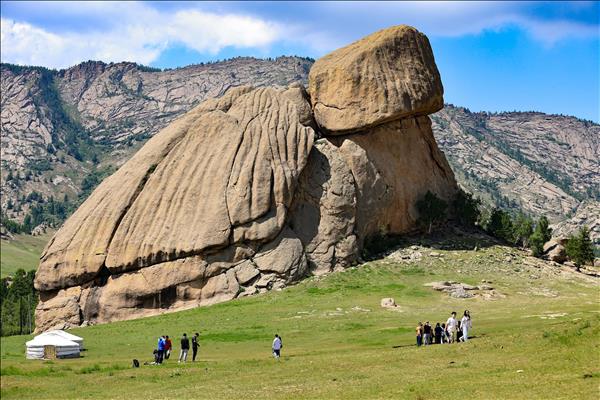Ta Xua, Hong Ngai, Hang Dong and Hang Chu are well-known places in the mountain district of Bac Yen, Son La province, which are named in the famous short story “Husband and Wife A Phu” by late writer To Hoai. In recent years, these localities have become favourite destinations of photographers hunting for clouds, frost, and the local specialty Shan tuyet tea.
My visit to Ta Xua was not merely to seek the above but to learn the culture of the local Mong, which is so appealing to me as written in To Hoai’s poem “Bai ca tren nui” (Song on the mountain):
“Someone blows khen (pan-pie) at sunset in the forest,
Khen sings the words of love and longing,
Way to the forest, way down the mountain,
There are only stars in the sky,
There are only two lovers on the mountain…”
Arriving at “Song Khung long” (backbone of a dinosaur), the valley of clouds so appealing to mountain adventurers, what stroke me first were the beautiful dresses of Mong women hung to dry in the cloudy air. The sophisticated patterns on those dresses made me think of the ups and downs of Hang Dong, the cloud-covered mountain range in front of me. A local Mong woman told me that clothing would dry despite the clouds in every corner of this region.
“Someone blows khen (pan-pie) at sunset in the forest,
Khen sings the words of love and longing,
Way to the forest, way down the mountain,
There are only stars in the sky,
There are only two lovers on the mountain…”
Arriving at “Song Khung long” (backbone of a dinosaur), the valley of clouds so appealing to mountain adventurers, what stroke me first were the beautiful dresses of Mong women hung to dry in the cloudy air. The sophisticated patterns on those dresses made me think of the ups and downs of Hang Dong, the cloud-covered mountain range in front of me. A local Mong woman told me that clothing would dry despite the clouds in every corner of this region.
|
In early February 2018 when the temperature went down to zero, frost and snow covered forests on the peak of Ta Xua, luring thousands of visitors to this rare natural phenomenon. Photo: Nguyen Van Duy  Ta Xua, the year-round cloudy land. Photo: Trong Chinh Ta Xua is also known for its tasty hundred-year-old Shan tuyet tea which grows in the high mountains. Photo: Trong Chinh 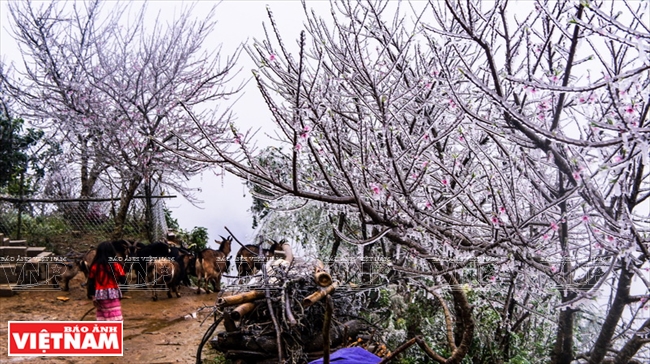 Over 1,000 metres above sea level, Ta Xua peak in Bac Yen district, Son La province, had a temperature of between minus one and zero Celsius from February 3-7. The area was covered with frost and snow. In the photo: A Mong child and a flock of goats amid white frost in Ta Xua. Photo: Nguyen Van Duy 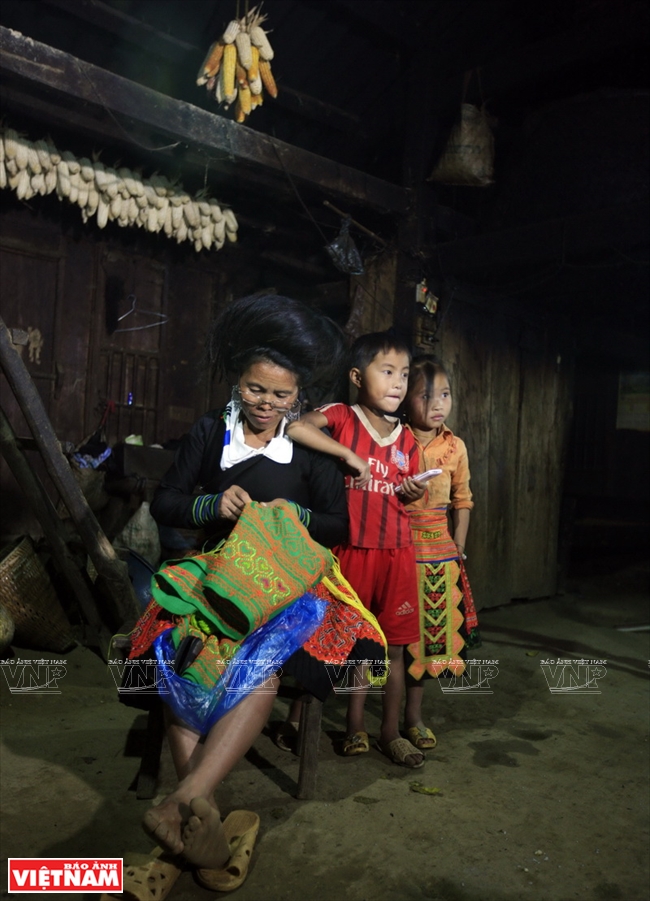 After harvesting time, a Mong woman embroiders clothes in preparation for traditional festivals. Photo: Trong Chinh 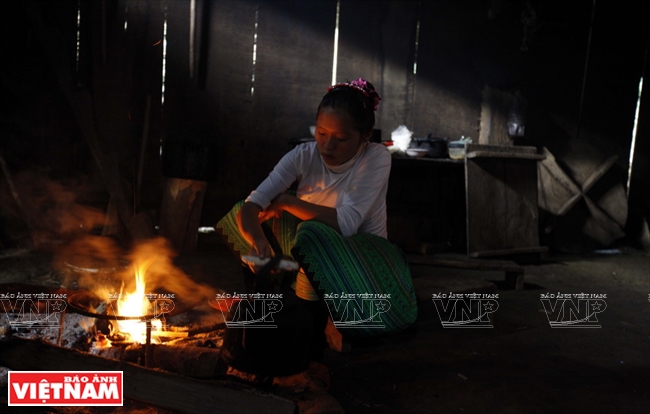 Inside wooden houses, a diligent Mong woman is busy with her daily chores. Photo: Trong Chinh |
|
In early February this year when the temperature went down to zero, frost and snow covered forests on the peak of Ta Xua, luring thousands of visitors to this rare natural phenomenon. I never had such a feeling that the sky and earth were so close as when I saw white clouds from mountain gorges filling in valleys and villages and covering the mountain peaks. Around Ta Xua was only the colour of white smoke, making me get lost amid colourful brocade dresses and beautiful khen notes at the festival. |
Festival events are very important in the life of the Mong in Bac Yen. A person is not regarded as a Mong if he does not participate in festivals, throw a pao (cloth ball), and play a khen. Schools allow students to have a day off whenever a Mong festival is held. Attending festivals is regarded as an extracurricular activity of schools, according to Mua Thi Ca, a Mong woman who is a staff member of Homestay Tra May, the lodging house in Ta Xua commune where I stayed.
At 8am when clouds still covered Ta Xua, the commune centre where the festival was held was already crowded with people bringing their local specialties for display and sale at the festival. They were the Mong from Bac Yen’s communes, including Hang Chu, Hang Dong, Hong Ngai, Hua Nhan, Lang Cheu, Muong Khoa, Pac Nga, Phieng Ban, Phieng Con, Song Pe, Ta Khoa and Xim Vang. At noon when the clouds grew thicker, more people flocked to the festival, creating a hectic atmosphere with a host of activities, including playing folk games of throwing pao and pushing sticks, and competing in making cakes and brewing liquor. All festival activities took place with the rhythmic sounds of khen in the background.
The Mong are known for their hospitality. Going around the festival area, I was offered liquor by people from Hang Chu, pickled bamboo shoots by those from Xim Vang and grilled fish by locals from Ta Khoa. I was also moved by their kind invitations such as “visit Hang Chu to get drunk with me,” “come to Hong Ngai to try mustard greens as sweet as sugar,” “drop in Xim Vang to have corn liquor and thang co (a specialty dish of the Mong made from horse meat)”.
 The 1,600 metre-high Backbone of a Dinosaur, one of the three mountains of the Ta Xua range. Photo: Trong Chinh  It draws many visitors who come to see dawn flickering in the sea of clouds. Photo: Trong Chinh 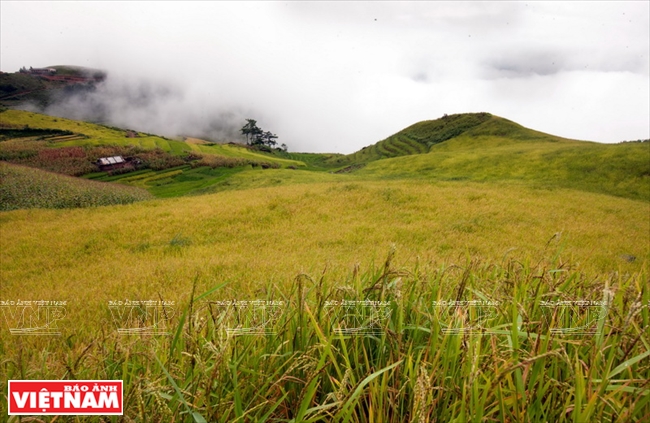 The centre of Xim Vang commune, 14 km from Ta Xua, boasts Bac Yen district’s largest area of terraced fields where 315 hectares of rice are ripe. Photo: Trong Chinh 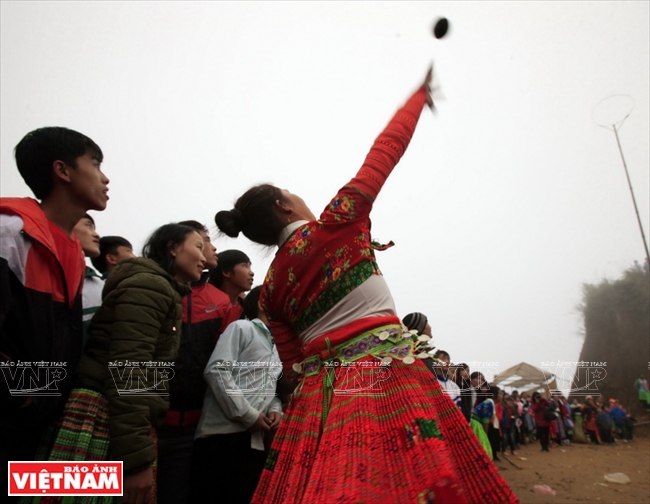 Visiting a Mong festival, one can see a lot of folk games, such as danh con (throwing a cloth ball through a circle), throwing pao, and top spinning. Photo: Trong Chinh Mong men compete in a banh day (round sticky rice cake) making contest at the Cultural Festival of Ethnic Groups in Bac Yen district held in Ta Xua commune in December 2017. Photo: Trong Chinh 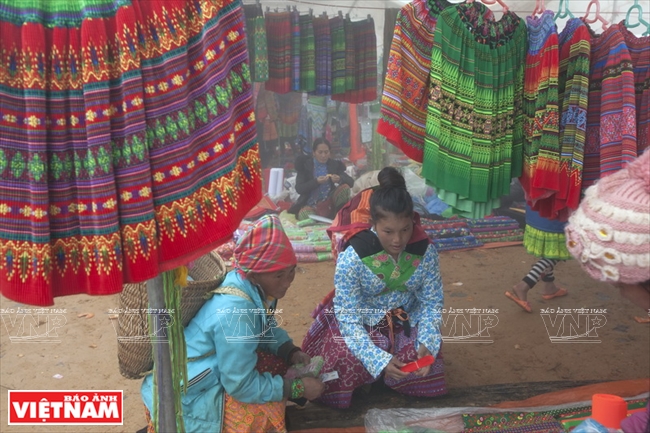 In the foggy highland market are Mong girls in charming colourful traditional costumes. Photo: Trong Chinh Black pork and Hang Chu liquor are specialties on the New Year food tray prepared by Mong women. Photo: Trong Chinh |
| Known as the northern cloudy heaven, Ta Xua, located nearly 2000 metres above sea level, is home to cloudy mountains which create an amazing beauty for this land. The 1,600 metre-high Backbone of a Dinosaur, one of the three mountains of the Ta Xua range, draws many visitors who come to see dawn flickering in the sea of clouds. |
“I throw a pao
You do not catch it
You do not love me
The pao drops…”
I googled the word Ta Xua and found 238,000 entries within a second, which, however, are mostly about cloudy areas and snowy villages without much information about the life of the Mong here. This reminded me of the remark by Pham Vu Khanh, a man with knowledge about Ta Xua who is keen on developing tourism here, starting with his Homestay Tra May: “Ta Xua is just as wild as Sa Pa 30 years ago.”
|
“Ta Xua with a population of over 3,000 most of whom are Mong is suitable for community tourism and experience-based tourism as original cultural traits of the Mong are well preserved here, including traditional costumes, housing, habits, practices of belief, and language.” Le Van Ky Chairman of the People’s Committee of Bac Yen district. |
Story: Thong Thien - Photos: Trong Chinh - Nguyen Van Duy


